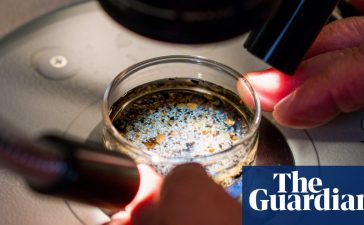Having two copies of a gene variant known to predispose people to Alzheimer’s could in fact represent a distinct genetic form of the disease, researchers have said.
The variant, known as ApoE4, has long been known to increase the risk of developing Alzheimer’s, with two copies conferring greater risk than one.
Now research has revealed almost everyone with two copies of the variant goes on to develop Alzheimer’s disease (AD), suggesting it is not only a risk factor but a cause.
“Over 95% of the individuals [with two copies of ApoE4], have AD pathology either in the brain or in the biomarkers that we analysed,” said Dr Juan Fortea, the co-author of the research from the Sant Pau hospital in Barcelona.
His team said the predicability of the age at which symptoms began was similar to other genetic forms of the disease such as autosomal-dominant Alzheimer’s disease (ADAD) and Alzheimer’s disease in Down syndrome (DSAD).
Dr Victor Montal, a co-author from Barcelona Supercomputing Center, said the research had catalysed a paradigm shift in the understanding of the disease.
“Whereas previously, the etiology of dementia was known in less than 1% of cases, our work has now enabled the identification of causative factors in over 15% of instances,” he said.
However, the study did not shed light on the risk of developing dementia itself for people with two copies of ApoE4.
Writing in the journal Nature Medicine, the researchers reported how postmortem results from 3,297 brain donors revealed nearly all of the 273 donors with two copies of ApoE4 showed signs of Alzheimer’s in the brain.
The researchers also analysed clinical data from more than 10,000 people, revealing that by the age of 65, almost all of the 519 people with two copies of ApoE4 had abnormal levels of a protein involved in Alzheimer’s, known as amyloid beta, in their cerebrospinal fluid, and 75% had positive amyloid scans. The prevalence of biomarkers for the disease also increased with age.
The team added that the age of symptom onset was about seven to 10 years earlier in people with two copies of ApoE4, at about 65 years, compared with those without the variant.
The researchers said that with approximately 2% of the general population thought to have two copies of ApoE4, this form of Alzheimer’s constituted one of the most frequently occurring diseases that was down to alterations in just one gene.
However, with much of the data gathered from people with European ancestry, further work is needed to explore whether the findings hold in people of different ethnicities.
Prof Reisa Sperling, a co-author of the study from Brigham and Women’s hospital in Boston, US, said while concerns had been raised about using Alzheimer’s drugs such as lecanemab in people with two copies of ApoE4, the new work flagged the importance of further research in the area, as well as around other approaches for treatment and prevention in such individuals.
Writing in an associated opinion piece, researchers from the University of California, San Francisco and the city’s Gladstone Institutes, said that defining having two copies of ApoE4 as a distinct genetic form of Alzheimer’s disease had important consequences, from allowing those affected to receive support through educational and counselling programmes, to prompting new avenues of research, including targeted drug-development. They added that it could also lead to changes in the diagnosis and management of the disease and influence the way clinical trials are designed.
Not everyone agreed with the conclusions of the study. “I do not see anything in this paper to justify the claim that carrying two copies of ApoE4 represents some ‘distinct genetic form’ of Alzheimer’s disease,” said Prof David Curtis, an honorary professor at the University College London’s Genetics Institute.
“No matter how many [copies] of ApoE4 one carries the underlying disease processes seem similar across cases of Alzheimer’s disease, suggesting that any effective treatment and prevention strategies, which have yet to be developed, would have broad applicability,” he added.











